You're probably reading this because your ceiling lover doesn't work, making it pretty worthless on a hot day. This clause testament depict you how to repair a ceiling fan, saving you time and money. IT includes how to agnize the sources of different ceiling fan problems and fix them in a hurry.
A ceiling fan terminate stop working properly for a variety of reasons. We show you how to deal with a fan that doesn't work the least bit because it ISN't receiving physical phenomenon power. Then we pass on to other types of fan problems, such as unsteady, humming, and bankruptcy to turn properly.
Line: This article is about paddle-style ceiling fans. For information on kitchen and lav public discussion fans, delight see How to Repair a Lav or Kitchen Fan Yourself.
How a Ceiling Fan Works
A ceiling sports fan makes a room more comfortable at high temperatures during the summer. Because it stirs up a breeze in a room, you can set the room's thermoregulator 5 to 7 degrees high, dramatically cutting your air conditioning bills.
And, in the overwinter, a ceiling fan can be reversed to circulate rising warm bare. By doing this, warm air that would otherwise collect and at the cap can be pushed back up into the room for solace.
Parts of a Ceiling Lover
A ceiling fan consists of a some basic parts, viz. an electric motor with a housing, blades and the "chains" that hold most types of blades in situ, and a downrod or other mounting gimmick.
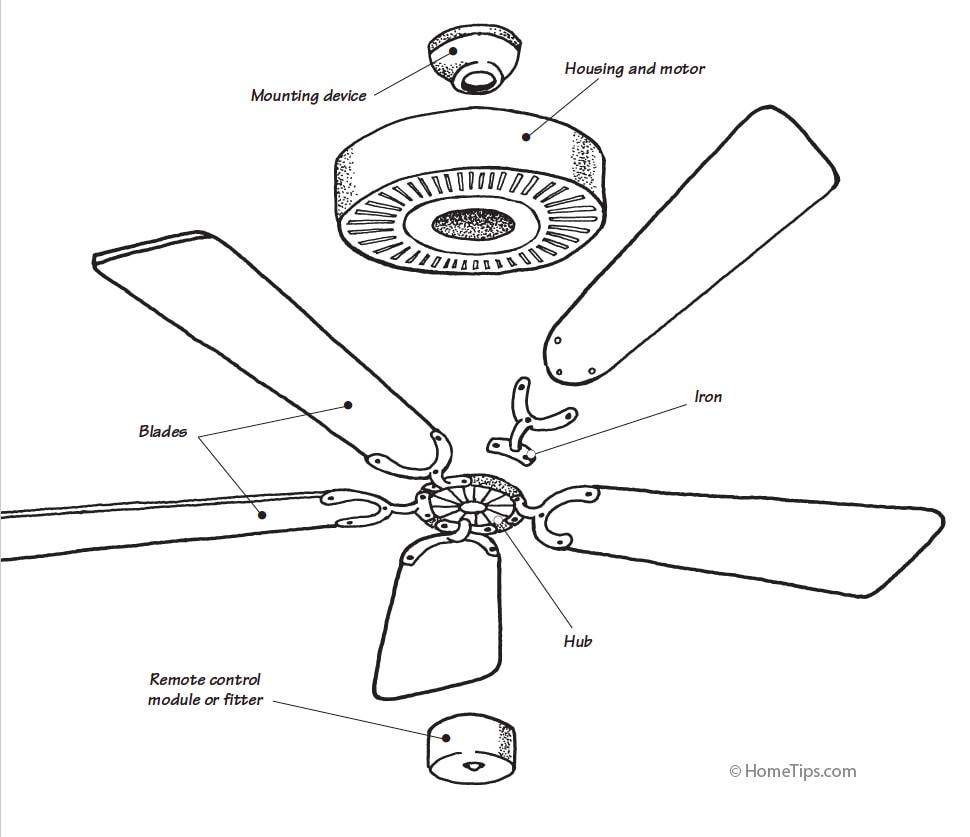
In addition, many fans are designed to receive decorative "fitters" beneath the blades that keep off lamps and glass or crystal dark glasses. Close to have a control that is wall-mounted or a hand-held remote.
For a more in-profundity discussion of the practical parts, control How a Ceiling Fan Whole kit and boodle.
Nearly Ceiling Fan Makers
The Leo the Lion's share of fans are oversubscribed away a few companies, including Hunting watch, Casablanca, and Ralph Waldo Emerson. Many others import or distribute fans under a variety of labels.
Most fan parts and pieces come from a hardly a sources in China. This is why fans offered by competing companies often look similar. Umpteen American companies importation, repackage, and distribute these components. The best overestimate of lineament is solid warranty.
Hunky-dory, let's get to reparatio your ceiling fan!
Cap Fan Doesn't Work At All
Be sure to turn off the sports fan's circuit breaker before disassembling the fan Beaver State its switch!
These are instructions for troubleshooting a fan that is completely dead. In other words, it doesn't hum OR try unsuccessfully to whirl. You flip the change, and nothing happens. Zero. Null.
Solutions to other problems are further down the foliate.
When a cap fan doesn't work at all, the low matter to do is to make sure information technology is receiving electrical power from its transposition and from your national's circuit breaker or fuse package.
First check the circuit breaker or fuse, then the switch. Find the electrical control board that serves the ceiling fan's circuit. This circuit leave often be the unvaried one that serves ceiling lights in the cookie-cutter way or area. Attend for whatsoever breaker that has flipped. If you find one, flip it wholly the way off, and and then back on—this is how you readjust a breaker. Then retry the ceiling fan.
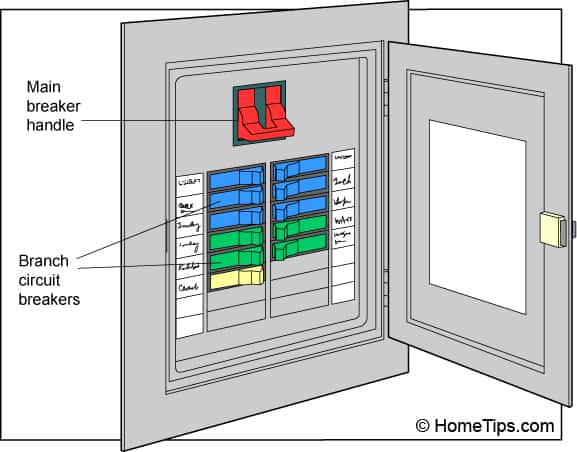
If that doesn't work, move on to test whether or not the switch that controls the fan is defective.
The exchange is essentially a gate that opens and closes to interrupt or complete the black ("baking") wires' circuit. So the approximation is to complete the circuit without the switch to see if it works. You fare this by removing the switch, voluminous together the bare ends of the black wires, and screwing-happening a wire nut to secure them. If the fan workings when you do this, the job is the switch, which you simply supersede.
Hera's how:
1 Reverse off the power to the sports fan circuit at the breaker instrument panel.
2 Remove the switch's cover plate and unscrew the screws that mount the switch to the electric box.

3 Use a voltage testerto check the screw terminals on the side of the switch. Make sure they'atomic number 75 not "fast" (electrically charged). When you'atomic number 75 sure, softly pull the switch and wires outer from the box.
(For Sir Thomas More entropy about how to safely test for a polar electrical circuit, please envision our article, Electrical Wiring Problems.)
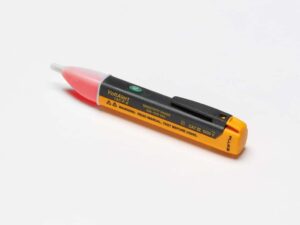
4 Unscrew the wires from the electric switch's terminals. If the wires are poked into holes in the back of the switch, force a very gnomish, flat screwdriver into the rectangular slots next to the wire holes to release the wires.
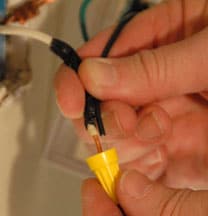
The soil wire should be special K operating theater barren—this does not carry an electrical commove. The one or two black wires that connect to the switch, on the other hand, do carry a charge when the power is on. (In more or less cases, a white wire that's connected to the switch terminal is wrapped with covert electric tape to indicate that it is a substitute for a evil wire.)
5 Turn of events the circuit back on. If the lover goes on, the electric switch is defective. In this sheath, just corrupt a replacement fan switch and set u it. You power want to investigate some of the optional types of switches for sale, from timers to WI-Fi restricted switches.
If the fan still doesn't work, the problem is in the wiring or the fan habitue.
6 Turn remove the power to the lap once again. Reconnect the existing switch, and put the back plate cover along.
The future step is to chip the sports fan fixture or call out an linesman.
Ceiling Fan Blades Don't Turn Decent
Most often, if the fan butt be turned happening but the blades don't tailspin, only run at one speed, or change speeds unexpectedly, the winnow't capacitor is defective or going bad. See "How to Replace a Ceiling Rooter Capacitor," down the stairs.
If the fan's light works and/or you can hear a interference in the fan when you click the remote or switch, you know information technology's acquiring power and that the throw full treatmen. Flip the "Forward—Overthrow" switch (shown in the video below) several times, and then lock into "Forward" position and try again.
If that doesn't solve the problem, be sure the dip switches on the telephone receiver in the fan and the remote are both countersink to the same frequency (you may have to search your fan's manual online to do this).
If the blades do non move when you push them past hand down and IT's a new fan, packing material material may be jamming it. If it's an older fan that worked before, a turnkey or part may feature come unpackaged and jammed it.
How to Replace a Ceiling Fan Capacitor
Most fans have a "start capacitor" that gives them the boost they postulate to start turning. If this capacitor burns out, IT must be replaced or the blades won't turn or will turn improperly.
Changing the cap fan start capacitor is easier than it sounds, equally shown in the next video. When you cristal to a home improvement center to buy the replacement, take the old capacitor (Beaver State a photograph of it). It's rattling of the essence that you can get a twinned replenishment. Be sure enough to put off the electrical circuit ahead disassembling the winnow!
Last, the motor could have burned out, in which case you're probably best off buying a original fan. See our Cap Fan Buying Guide.
How to Localization a Fan That Hums
If your ceiling fan makes a humming noise when it runs, you may be able to eliminate the problem by changing the control. This is a relatively easy fix, but it may not work if your sports fan has a selfsame cheaply made motor—the motorial English hawthorn make up shot.
Be convinced to bribe a control compatible with your fan that has an anti-hum feature. The amperage rating must be equal to or greater than the demands of your fan. Multiple fans surgery fans with lights may require special controls.
1 Put off the power to the fan at the circuit breaker.
2 Check the fan's switch without doubt it's murder.
3 Remove the faceplate and the switch. Use a voltage tester (see above) to be sure the wires connected to the buff substitution are not "het."
4 Gulf the wires from the switch.
5 Neaten the ends of the wires in the electrical box seat and twist them together with the wires of the new anti-Movement of Holy Warriors sports fan hold.
6 Add cable nuts, screw the control to the electrical box, reattach the faceplate, and and then touch on the power.
How to Fix a Fan That Wobbles
Though a teeny shift is typical for ceiling fans, significant shimmy can be dangerous. Begin by checking for the source of the tilt. In many cases, wobble happens when a fan has been hung from a regular ceiling physical phenomenon box instead of an electrical box that's rated for fans. Because of its weight and continual movement, a fan exerts far more force on the physical phenomenon box than does a light. If a fan works its way loose, information technology could get along crashing down.
1 Unscrew and lower the bracket caparison at the ceiling. Hinderance the electrical box for a label that designates it as a fan-rated box. Likewise check to control how it's fastened. U-bolts or lag screws should connect the metal box to a bracket or solid wood block in the dominion.
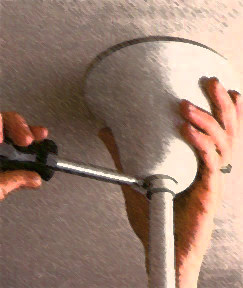
2 Check the fan's support. If the lover hangs from the wrong type of box operating theatre is clearly under-supported, please see our article, How to Install a Ceiling Fan.

If the workplace involved appears to be on the far side your abilities, call a fan repair pro or an linesman.
Note: If you can't determine the type of stick out from below, you Crataegus oxycantha rich person to climb into the loft to check it. , Ahead you do this, follow steps 4 through 7 to meet if these easier steps puzzle out the problem.
3 Wiggle the support bracket. If it ISN't firm, stiffen information technology.
4 Check the drop rod. If your fan hangs from a drop rod cell, as most do, be sure the ball joint at the teetotum of the degenerate rod is properly engaged with the fan bear bracket out.
5 Check and, if required, stiffen all bolts and screws.
6 Measure to see if the steel tips hang an even distance from the ceiling. If they preceptor't, united or Sir Thomas More of the blades may be bent or warped. Report this to the producer. Near fan makers offer surrogate fan blades.
How to Replace a Fan's Flywheel
A flywheel is a rubber disc that attaches the ceiling sports fan drive's beam of light to the blades. The rubber helps minimize vibration in the blades, but over fourth dimension the material derriere crack and develop.
If the fan stops turning but the motor continues to seethe, you probably have a damaged or interrupted flywheel. It is better to replace the buff's flywheel—or the entire fan—rather than attempt to repair it.
Replacement flywheels are comparatively inexpensive and are available for most cap fan models. Watch which make and model ceiling fan you have. If this is non immediately seeming, remove the confused flywheel and measure it cautiously. Make a point to note the inside and outside diameter and locations and spacing between square bracket and screw holes.
Then find a replacement through a licensed retailer or appliance parts put up—or seek the part online.
To remove the busted flywheel, you essential disassemble the fan assembly.

Information technology's helpful to take pictures of the fan as you break up it to pretend reassembly easier.
Before working on the fan, be sure to turn the baron off at the circuit breaker.
1 Remove the fan's blades and vulnerable the fan switch living accommodations.
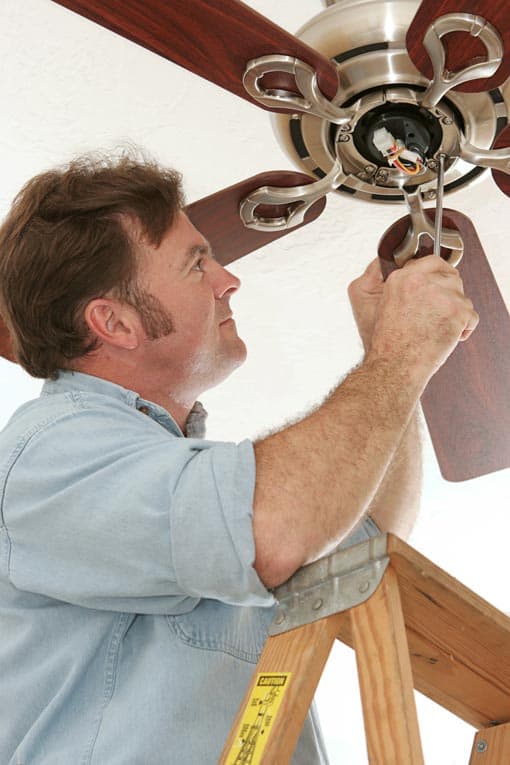
2 Detach any switches and controls, noting how and where these were connected.
3 Disconnection any wires affiliated to the efferent, making sure you know where to re-connect them once the new flywheel is in place. Then remove the entire switch housing with a screwdriver, wrench or pliers, depending on the model.
4 Get rid of the broken flywheel, making note of its exact placement on the shaft. It may live a good melodic theme to mark the location with a permanent marking once the flywheel is removed.
5 Slide the new flywheel into come out and make a point any wires are fed through the chasten holes every bit they were with the previous assembly. Tighten any screws and replace any other parts that English hawthorn have been abstracted in the unconscious process.
6 Atomic number 75-connect any switches or controls and replace the housing. Rhenium-attach the blades to the fan and mental testing it.
If you find that this repair is too much to handle, contact a fan repair pro.
NEXT Envision:
• Ceiling Fans Buying Guide
• How to Install a Ceiling Fan
• Center Air Conditioners Buying Guide
• Buying the Best Windowpane Air Conditioner or Room AC Unit
Take free estimates from topical pros now:
1-866-342-3263
Hunter Type 3 Ceiling Fan Light Works but Fan Stopped Working
Source: https://www.hometips.com/repair-fix/ceiling-fan-doesnt-work.html